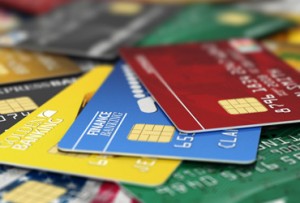 Investopedia defines Line of Credit (LOC) as an arrangement between a financial institution, and a customer that establishes a maximum loan balance that the bank will permit the borrower to maintain. The borrower can draw down on the line of credit at any time, as long as he or she does not exceed the maximum set in the agreement.
Investopedia defines Line of Credit (LOC) as an arrangement between a financial institution, and a customer that establishes a maximum loan balance that the bank will permit the borrower to maintain. The borrower can draw down on the line of credit at any time, as long as he or she does not exceed the maximum set in the agreement.
Line of Credit is usually used by small businesses to tide over the shortfall of cash. Therefore, it’s also referred to as business line of credit. This is a flexible source of capital that an entrepreneur uses to manage his business.
A line of credit is a specific amount of reserved pool of liquid cash that can be withdrawn as and when you need. You pay interest only on the amount you have withdrawn. It has an advantage over the business credit card because the rate of interest for LOC is lower than that of the credit card.
How a Line of Credit operates
Depending on the nature and good will of your business, a financial institution grants you a stipulated amount of cash. However, you don’t have to make any payments in form of interest until you withdraw funds from it. Let’s say a XYZ financial institution has granted you access to a sum of $60,000 as line of credit. That is your maximum credit is $60,000. If you decide to withdraw $20,000, you still have access to the remaining $40,000. If you return the amount you withdrew, then your account has $60,000.
Again you have access to the entire amount without reapplying for the credit. One of the biggest advantage is that you don’t have to reapply for the line of credit each time. This is one of the reasons its often referred to as “Revolving” credit.
Business LOC has lower rate of interest and closing the loan would cost you less than the traditional loan. However, if you delay the repayment or cross your maximum limit, then be prepared to pay high rate of interest on the withdrawn amount.
Four Lines of Credit Options
Traditional line-of-credit- This is usually opted by established small businesses that have proven business models. Here the credit limits are huge while the rate of interest is low. However, this type of LOC requires high credit scores as well as annual revenue reports. Traditional Line of Credit is often issued by the bank where a small business houses its business account.
Short-term line of credit- This is offered by private lending institutions and not the banks. Here the credit limit is not high, rate of interest is high and not many documents are required. This is most preferred by the new startups as it gives them an opportunity to reserve a flexible pool of capital.
Equipment or inventory backed line of credit- The lenders give credit based on the business equipment and even vehicles. In this option of line of credit, the lender will give credit based on the current value of the equipment. The good news is that, the lenders relax on the loan process and other requirements such as your past borrowing history and credit score. Though you get maximum limit on the credit, the rate of interest is high. If loan is not repaid on time, the lenders will claim the equipment or inventory that served as the collateral.
Invoice financing– Also known as accounts receivable financing. A small business would be given credit based on the value of the invoices. The value of the invoices also determines the maximum limit of the credit. With the increase in the value of the invoices, the credit limit also increases. Here the SMB (small and mid-sized business) owner need not wait for the customers to pay, instead he can take loan on the basis of invoices to tide over the shortfall of cash.
When a small business has access to business line of credit, it can manage its cash flow better and also take care of the unexpected expenses, or even fund short term business requirements. If you are thinking of growing your business opportunities or meet unforeseen business expenses, consider these above mentioned line of credit options. They are great safety net for small businesses.


